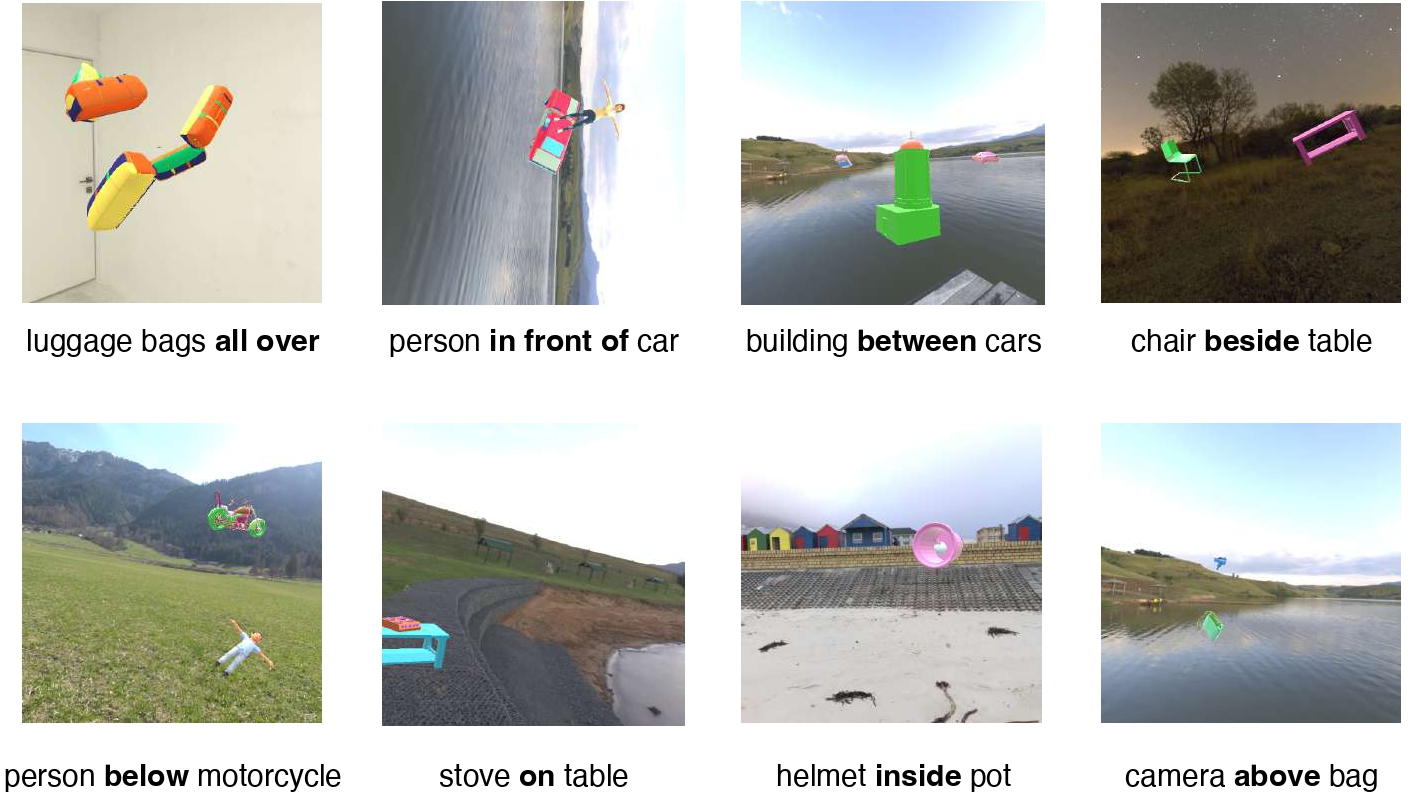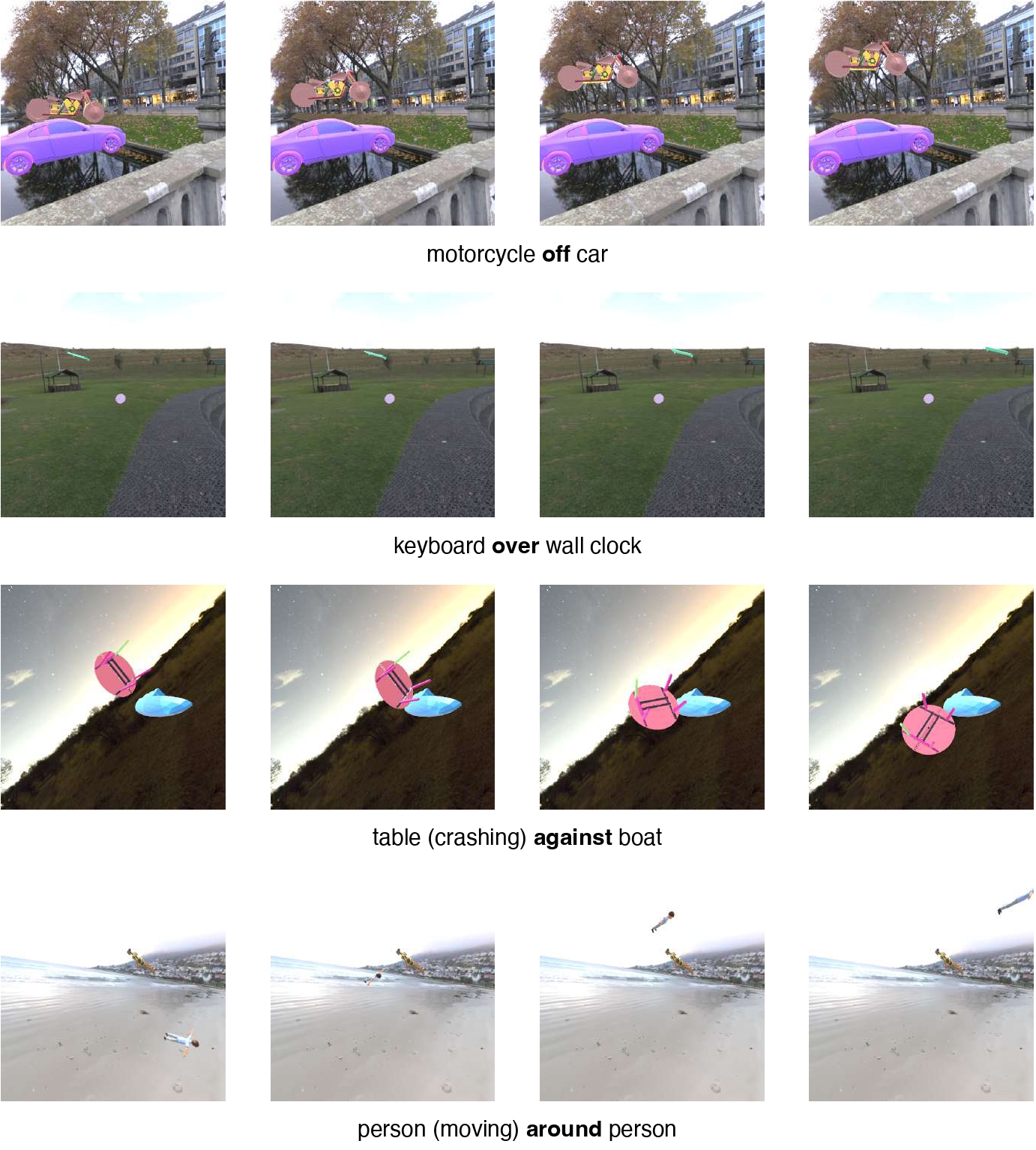STUPD (Spatial and Temporal Understanding of Prepositions Dataset) is a synthetic dataset that aims to help vision-language models understand relations at a granular level. STUPD covers 30 distinct spatial relations, and 10 distinct temporal relations.
The STUPD dataset is available in the form of zip files in this google drive link. The total size of the dataset is 959 GB. For convenience, the dataset has been divided into multiple zip files, each not exceeding 3GB.
Categories (specifically dynamic relations, 16 in number) are uploaded as multipart zip files in respective directories. To unzip them, you would have to compile the parts back together into a single zip file as cat myfolder.part-* > myfolder.zip
For reviewers, and to get a quick sense of the STUPD dataset, you can view 50 examples from each category in this google drive link.
If you are interested in generating the dataset yourself, rather than using the dataset we provide, we provide all the UNITY configuration scripts for anyone to generate the (spatial)-STUPD dataset. There are many reasons why you would want to generate the dataset on your local UNITY setup. You can customize the logic, add in more configurations possibilities (more skins, backgrounds and objects), and also extract different types of meta-data.
In experiments, we provide pytorch-based scripts to run baselines that are reported in the paper.
If you find our dataset useful in your research, please use the following citation:
@article{agrawal2023stupd,
title={STUPD: A Synthetic Dataset for Spatial and Temporal Relation Reasoning},
author={Agrawal, Palaash and Azaman, Haidi and Tan, Cheston},
journal={arXiv preprint arXiv:2309.06680},
year={2023}
}


